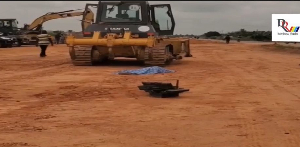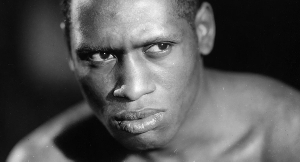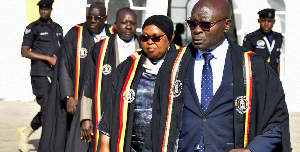Introduction
The Golden Jubilee celebrations were ushered in with nation wide prayers. Moslems, traditionalists and Christians prayed for a successful year long celebrations. It is very common to see Ghanaians, consciously or unconsciously making the sign of the cross, mention nyame (that is God in Twi) or Allah in times of great difficulty or joy. Ghanaians just like the other Africans are notoriously very religious (Mbiti 1969:1). Festive activities and other programmes usually begin with an opening prayer either by a Christian minister or an Imam, and there is also the pouring of libation by the traditionalist. Religion, be it Christianity, Islam or traditional has dominated our national life for the past five decades. Christianity which is the main subject of this article has undergone many changes since Ghana attained statehood.The Orthodox Christian churches led the evangelization crusade in Ghana in the 19th century onwards. These religious denominations were led by Europeans and the impact of these Christians institutions cannot be over emphasized. The late 1970s witnessed a second wave of religious crusade led by Ghanaians. These Charismatic churches for the past two decades have been making headlines with their healing and deliverance services.
In this article, an attempt is made to inform readers specifically on the advent of Christianity in Ghana, and the role played by these Christian institutions in the development of Ghana in the past fifty years. This article therefore is a partial rather than a comprehensive survey of Christianity in Ghana in the past five decades. Further, the article concentrates on two Christian denominations – Catholic and the Methodist faiths. While not wishing to downplay the importance of other religious denominations, we choose rather to focus on Catholicism and Methodism because of their size in terms of membership and their geographical reach. However, this is not to say that the other religious denominations did not play a role in the development of Ghana.
The Advent of Christianity in Ghana
By the mention of Orthodox Christian Churches in Ghana, one refers to the Roman Catholic, Anglican, Basel (now Presbyterian), Bremen or North German (now Evangelical Presbyterian) and Wesleyan Methodist Missions (Ahiable-Addo 2001:1). Since the advent of these churches in Ghana at various times, these Christian institutions have contributed in varying dimensions to the cultural, economic, moral,social,spiritual and political transformation of the people of Ghana. The Catholic Church is one of the mainstream Christian religious missions in Ghana. In fact, it is the premier Christian religious society in the country, for it is the first mission that was established by Europeans on the Ghanaian soil. This was done at Elmina (El Mina-the gold mines) in 1482 by some Catholic priests who accompanied the Portuguese immigrants who arrived in the Gold Coast in January 1482 to build Fort St.George (Sao Jaogo), the present day Elmina Castle. However, in 1642, the Calvinist Dutch proscribed the Catholic Church. This action was necessitated by the capture of all Portuguese possessions throughout the West Coast of Ghana between 1637 and 1642. The presence of the Dutch (1637-1872) in Ghana forced Catholicism into recession for two hundred and thirty eight years. The Catholic Church re-emerged in Ghana in May 1880 thus becoming the last of the major Christian denominations of the 19th century to be established in Ghana. The Rev.Frs. Auguste Moreau (33) and Eugene Murat (31), both French national and from the Society of the African Mission (S.M.A) are credited with the re-establishment of the Catholic Church in Ghana. After establishing a mission station at Elmina by 31, March, 1882, the S.M.A missionaries decided to extend the Catholic faith to Kumasi, the capital of the Asante state. They would, in due course spread the Catholic faith to other communities (Ahiable-Addo 2001:2). However, this intention was not possible and it took the Catholic missionaries twenty eighty years to found a formal church in Asante.
Before the re-entry of the Catholic Church in to the evangelization field, other religious denominations had already established their bases along the coastal regions of Ghana. One of such religious missions was the Wesleyan Methodist, presently the Methodist Church of Ghana. In terms of membership strength and geographical reach, the Methodist Church is the second largest church in Ghana. The Methodist Church was established in Cape Coast by the Rev.Mr.Joseph Rhodes Dunwell in 1835. On March 26, 1835, he issued to fifty adherents, the first Methodist Church membership cards ever given in Ghana. This act marked the formal establishment of the Methodist Church in Ghana (ibid: in TJCT Vol. VI, No.2, July, 1996, p.5).
Christianity beyond the Coastal towns of Ghana
The Christian Missions immediately after establishing their bases at Elmina (Catholic) and Cape Coast (Methodist) respectively, decided to extend their faiths to Asante. The coastal towns, perhaps because of their early contact with Europeans accepted Christianity without any major recorded squabbles. Were the Asante also ready to accept a foreign religion? In November 1838 when the Methodist Church was only forty-four months old in Ghana, it members and Circuit Minister, the Rev.Thomas Birch Freeman resolved to extend the church to Asante in the forest zone of Ghana. The Asante by their religious thoughts and practices were animists and polytheists. In the second half of the 1830s when Methodism was the Christian way of life at the Fante and Ga coasts, Asante’s religion was fetishism or paganism. And if there were to be progress in Asante, fetishism must be replaced with Christianity (ibid: Vol.III, Nos: 1 & 2, July, 1997, p.29). The Methodist missionaries therefore resolved that Methodism must be planted at Kumasi at any cost to save the people not only from paganism, but also Islam as well as the vices endemic in their society. The Asante did not only resist the introduction of a foreign religion into their Kingdom, but they viewed every move by the missionaries with great suspicion and consternation. Hence all early attempts at proselytizing the Asante to Christianity were thwarted.
The first attempt was made by the Methodist Church when the Rev.Freeman led a team from Cape Coast in February 1839 to visit the Asante Kingdom. The Rev. Freeman and his party traveled without let to Kwisa in Fomena (Adansi District of Asante). At Kwisa the troubles of the mission started. On the party’s entry into the town, a fetish priest, who sighted it went clairvoyant and immediately instructed that the party be restrained from further advance. On the next day, Rev.Freeman and his party were summoned to a meeting with the fetish priest in attendance. The fetish priest proclaimed that the town stood the danger of being ravaged by fire on account of the Rev.Freeman’s entry and that the calamity could only be averted by propitiating the gods (Wolfson 1965:120). The ordeals at Kwisa and Fomena did not end the mission’s trauma on the remainder of its journey to Kumasi. At Fomena the paramount chief, Nana Kwantwi detained the party for two weeks. Upon their release from detention, the party continued it journey to Kumasi. However, the mission was to witness more distressing things on it way to Kumasi. The path to Kumasi which the mission took was strewn with ritual sacrifices containing boiled eggs, beads and plantains among other items (ibid). On the outskirts of Kumasi, they had yet another excruciating experience. The Manhyia guards, who came to lead them into the town, took the party through two towering domes of fresh earth on either side of the narrow path. On enquiry, they were informed that the heaps were graves of two persons ritually buried alive on the instructions of the Asante court to avert any calamity that might emanate from their visit (Claridge 1964:433, cited in Ahiable-Addo, 1997).
These experiences among many others were enough to daunt the Rev.Freeman’s determination to drop his agenda and return to Cape Coast, but these pioneers of the Methodist Church in Asante pressed on. They were determined to proselytize the Asante at any cost. The assumption was that once the ‘blood thirsty’ Asante were converted to Christianity, they would desist from heinous crimes (Ahiable-Addo in TJCT, Vol.III, Nos: 1 & 2, July, 1997, p.33). It took several weeks before the Asantehene Kwaku Dua I (1838-1867) eventually granted the Methodist mission audience. He allowed Rev.Freeman to visit the royal mausoleum, preach in the streets of Kumasi and conduct two Sunday services (Bartels 1986:39). Spurred on by these developments, Rev.Freeman asked the Asantehene for permission to formally establish a church and a school. This request was turn down by the Court. However, Rev.Freeman was asked to return at a later date if he so desired. Clearly, this first attempt to proselytize the Asante was a failure.
With the first attempt at evangelizing the Asante being a failure, the Methodist missionaries work hard to make their second visit a success. And just like most 19th century European adventurers, the Rev. Freeman lavished a lot of gifts on his host (the Asantehene) on this second visit. And to demonstrate that Methodism was welcome in the Kingdom, the Asante court allocated to the missionaries a piece of disused military cemetery in 1842, located at Krobo, presently an integral part of Asante New Town (Ahiable-Addo in TJCT, Vol.III, Nos: 1 & 2, July, 1997, p.36). As a result of the positive change in attitude by the Asante court to Christianity, the Rev.Freeman accomplished the establishment of Methodism in Kumasi in 1842. Through the spread of the gospel in and around Kumasi by the Methodist missionaries, some converts were made to Methodism. Occasionally, even the Asantehene, his elders and palace officials attended divine services conducted at the mission station (Bartels 1986:53). With these early developments, the missionaries proposed the establishment of schools in Kumasi in which Asante children could enroll for formal education (op.cit, 37). The request was blatantly rebuffed by the court. The Asante did not take kindly to the idea of having formal education in the Kingdom. And in emphasizing his subjects’ aversion to western education, the Asantehene, Kwaku Dua I himself, swanked to the missionaries;
Asante children have better work to do than to sit down (in school) all day long idly, to learn hoy! hoy! hoy!; they have to fan their parents and do their (house)work which is better(Kimble1965:75 & Agyeman1986:56-57,cited in Ahiable-Addo,1997).
Hoy! Hoy! Hoy! refers to Holy! Holy! Holy! This resurgence of negative response from the Asante court did not dim the church’s desire to introduce formal education into the Kingdom. The missionaries persisted in talking to the Asantehene and his elders about the benefits of formal education. Manhyia finally endorsed, in 1842, the establishment of the Kumasi Wesleyan Methodist Junior School, the first of its kind in Asante. Where as the Asantehene Kwaku Dua I and his elders did not see the need to have western education established in the Asante Kingdom, in 1952, the Asantehene Nana Sir Osei Agyemang Prempeh II (1931-1970), asked the Catholic Church to build more schools in Asante and in response the Catholic bishop, the Rt.Rev.Andrew Van den Bronk rhetorically and jokingly asked the Asantehene;
Nana do you think that if your people are well educated you will have people to carry you in your palanquin during Odwira or Akwasidae? (Ahiable-Addo 2001, p.4)
This joke to the Asantehene did not go down well with the palace. From this brief account it is clear that by 1842 the Methodist Church was firmly established in the Asante Kingdom.
We now turn our attention to the Catholic Church and the efforts made to introduce Christianity into Asante. Efforts to start the Catholic Church in Asante dated to April 1, 1882 when Rev.Frs Moreau and Jean-Marie Michon resolved to that effect. Unlike the Methodist missionaries of the 1830s, the Catholic delegation to Kumasi was warmly received. The Asantehene Mensa Bonsu (1874-1883) granted them an exclusive audience. And during the interview, the Rev.Fr.Moreau,requested that they be allowed to open missions in the Asante Kingdom; this done, they would be able to help the King and his subjects to praise God, teach their children to be equal to Europeans in skills and knowledge, as well as look after the sick(Graham1976:61). This maiden effort to open a Catholic mission in Kumasi was not successful. The Catholic Church was formally established in the Asante Kingdom in 1910. The Rev.Fr.Simeon Albeniz celebrated a Holy Mass on Christmas Day, December 25, 1910, thus marking the formal introduction of the Catholic Church in Kumasi.
The Catholic Church is very important in northern Ghana and contrary to popular perception held by many southerners that northerners are all Moslem. In fact Tamale is an Archdiocese and has a major seminary. Catholicism was planted in northern Ghana by the White Fathers; it was their robe, originally based on the white garments of the Arabs that gave them the name. Unlike in Asante where Manhyia was the standing block in the way of the Methodist and Catholic missionaries, in northern Ghana it was the British colonial authorities and their local agents (the chiefs) who thwarted efforts at proselytizing the people of the North to Christianity. Until 1929, the British colonial authorities would not permit any Christian mission to establish a presence in the North-West (presently the Upper West Region). The first Catholic mission station in the North was opened in Navrongo in 1906 in the North-East and another station was opened in Jirapa in the North-West in 1929. Here, the Jirapa Naa allotted the missionaries a barren piece of land allegedly haunted by evil spirits, and waited to see whether they would drive out the White Fathers or the White Fathers drive them out (McCoy 1988:48-9). It was from these humble beginnings that the churches spread to all corners of Ghana.
The role of the Church in the development of Ghana
The Christian missions established several socio-economic institutions in Ghana as a medium of evangelization and conversion of the people to Christianity. These institutions were educational facilities at the basic and second cycle levels, health-care delivery units and industrial or economic institutions. These activities of the Christian missions had a tremendous impact on the people on Ghana both positively or negatively. However, the positive influences outweighed the negative ones.
Many educational institutions were established by the Christian missions starting from the coastal towns of Ghana. The central region is referred to as the “citadel of education” because of the many schools in the region. The region boasts of schools such as St.Augustine’s College, Wesley Girls High, and Adisadel College among others. Asante and the Northern regions remained largely illiterate up to the end of the 19th century. It was Asante’s intransigence that denied it citizens’ western education and this was commented on by the historian, S.K Odamtten:
During the nineteenth century when the coastal and near-coastal peoples of Ghana embraced Christianity and western education, with the recipients gaining employment in European commerce, industry, teaching, security services and the churches, the Asante refused to be touched by those modernizing social forces; they were still drumming and dancing Kete in the forest.
When the Asante finally embraced western education by the close of the 19th century, they demanded for more educational institutions to be established in the Asante Kingdom. In the case of Northern Ghana, it was basically the racist policies of the British colonial authorities that denied northerners western education. But thanks to the introduction of Christianity, many northerners were able to access education. In 1937, the Catholic mission opened it first primary school for boys in the Upper West region. Other prominent schools such as St.Francis of Assisi (girls), St.Francis Xavier Minor Seminary (boys) in the Upper West region, St.Charles secondary school (Tamale) and Notre Dame secondary school (Navrongo) were all established by the catholic mission.
Many Ghanaians became formally educated through the work of the Christian missions. Many acquired skills which they used to acquire decent means of livelihood as they contributed to local, regional and national development at various levels. Again by embracing Christianity many Ghanaians societies abandoned several obnoxious traditional customs. Further, the Christian missions led the way in health-care provision. They provided western health facilities for the people of Ghana especially the rural folk. The bookshops and printing presses opened throughout Ghana promoted education or literacy in general. Agriculture also received great attention from the Christian missions. A negative aspect that must be mention is the condemnation of anything African by these missionaries. This has resulted in the lost of part of our heritage.
The Church in national politics
The Church in Ghana has generally been apolitical but has not hesitated to take a stand against evil in the political process in Ghana (Oquaye 2004:347-8). The nation since independence has had Christian leaders from various denominations. The woman who had the greatest influence on Dr.Kwame Nkrumah, Madam Elizabeth Nyaniba, his mother was a Roman Catholic and through her Nkrumah too became a Roman Catholic; he took the Christian name Francis but seldom used it. Nkrumah went through Roman Catholic institutions including the St.Theresa’s Roman Catholic seminary at Aminsano near Cape Coast (Pobee 1988:10-11). Despite his Catholic up bringing, Nkrumah later described himself as a non-denominational Christian (Nkrumah 1957:10). The Convention People’s Party (CPP) had a few clashes with the Christian Council of Ghana. Immediately after independence the Christian Council of Ghana clashed with the politicians, first over the pouring of libation to welcome the Duchess of Kent and over a statue of Nkrumah. In 1958 Nkrumah’s statue, which stood twenty feet high, was erected in front of Parliament House. On its pedestal was inscribed the words: Seek ye first the political kingdom and all others things shall be added to you. This is an adaptation of Mathew 6:33, Seek ye first the kingdom of God and his righteousness; and all things shall be added unto you (Pobee 1988:118). The Christian Council of Ghana campaigned to have the words removed from the statue. This protest was of no avail. Further, the introduction of the Preventive Detention Act (PDA) was condemned by the Christian Council.
Another Ghanaian leader who came in for criticism by the Christian denominations was General Ignatius Kutu Acheampong (1972-78). General Acheampong was also born into the Roman Catholic Church. The mismanagement of the Ghanaian economy by the Supreme Military Council members resulted in organized labour embarking on strikes. When the crisis of May to August 1977 erupted, General Acheampong, declared a Week of National Repentance to run from the 27th June to July 3rd, 1977. The official reason given by the soldiers for subjecting all Ghanaians into repentance was that the ills of the nation, political and economic, were due to the sinfulness of the nation (Pobee 1992:6). Most of the main streams churches ignored the General’s call for repentance and rather the leadership of SMC was criticized for it mismanagement of the country. The churches did keep up a steady barrage of criticism until the General was toppled in a palace coup.
The government the bore the greatest criticism from the Church was the Provisional National Defence Council (PNDC 1981-1992) of Flight-Lieutenant JJ Rawlings.The church in its publication through the Catholic Standard, The Christian Messenger persistently protested against the PNDC till they were shut down. The Churches also condemned the extra-judicial killings generally and particularly the murder of the three high court judges and the retired army officer. From 1990 onwards, the churches became forceful exponents of a return to multi-party politics. In January 1991,for example, the Christian Council of Ghana issued a statement calling for the release of all political prisoners, the establishment of a constituent assembly and a return to democracy by the end of 1992(Nugent 1996:189).
The Pentecostal Churches
The most striking aspect of religious revitalization in West Africa over the last two decades has been the rise of evangelical Pentecostalism along the coastal and southern parts of the region (Larkin & Meyer 2006:286). Pentecostals preach prosperity and parade the accumulation of wealth as a sign of god’s blessings. These churches link prospect of prosperity with deliverance from evil forces such witchcraft, ancestral spirits and other demons (ibid: 290). These churches have tremendous appeal for people particular young men and women, who desperately seek to make progress in life. The landscape Accra and Kumasi are dominated by these mega-churches.
Conclusion It can be seen from this exposition that the early Christian missionaries in Ghana toed a chequered but successful path to find a footing in Ghana. The various Christian denominations have grown from their humble beginning in the 19th century into the mega-institutions that they are in the twenty first century Ghana. In keeping with the missions’ philosophy of saving souls, education and performing acts of charity, the various Christian denominations have established congregations in various parts of the country. The impact of this is that many Ghanaians have become notoriously religious condemning our traditional aspects of worship. Many have forsaken our traditional religion and customs. Above all, the churches built schools and colleges, (and now university colleges) which have turned out educated Ghanaians who have contributed immensely to the development of Ghana in the past five decades. Of equally important contribution to the development of Ghana is the churches health-care delivery system in which various Christian denominations constructed hospitals, clinics and health posts in various communities throughout Ghana to serve the health needs of Ghanaians throughout the past five decades. Lastly the role of the Christian Council of Ghana, the Ghana Bishop’s Conference of the Roman Catholic Church and the National Catholic Secretariat in conflict resolution should be commended. These institutions were the credible reconciler of the warring factions in the crisis that engulf the Acheampong regime. They have established themselves as the voice of the voiceless, fighting the cause of the poor in society.















